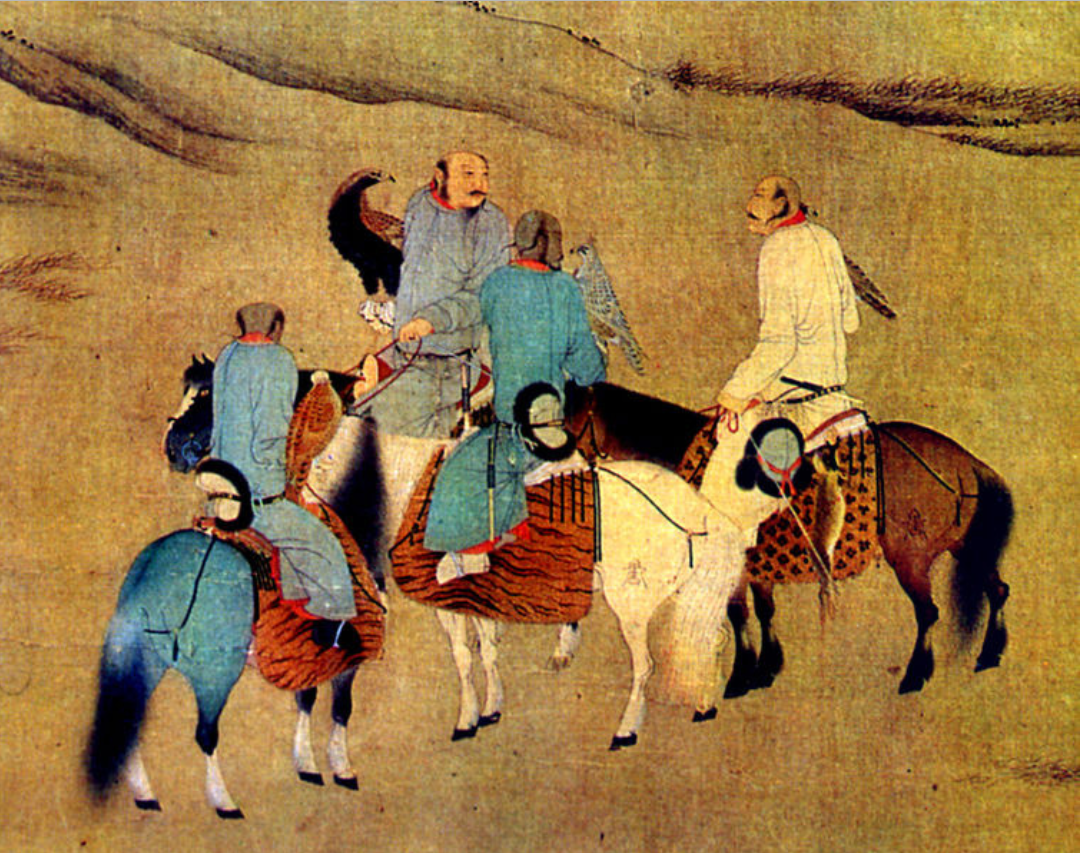Khitan falconers before the hunt by Hu, Gui
Author: Khitan artist Hu, Gui
Source: letter from FHT Director Huisheng Chen
Owner: National Palace Museum in Taiwan
Location: Taipei, Taiwan
Link to: Website
Click link to download the file: File_MongolHuntersSong.pdf (327.99 KB)
Khitan "Out Hunting", Wudai (Five generation period, prior to the establishment of Liao?, 907-979 AD) - by Hu, Gui
The Kitan were a nomadic Mongolic people, originally from Mongolia and Manchuria (the northeastern region of modern-day China) from the 4th century. During the peak of their dominate,the Liao Dynasty (916-1125 AD.), they controlled a vast area north of, and including parts of China; but have left few relics that have survived until today, after the fall of Liao Dynasty in 1125.
The few paintings of 9-10 century AD. Khitan artist: Hu, Gui preserved some aspects of Khitan culture that has been lost in history.
In this painting; , four mounted falconers with three saker falcons (maybe center one was a Gyr--Hai Qin) and a golden eagle were presented. The brown saker on the left was hooded, and the hood was typical Arabian/Dutch three-piece construction with out the tuft. All hunting birds were held on gloved right hands. Holding hawks on right hands are only seen in Asian falconers, except Japan. Maybe practicing falconry together is a time for peace for the mainland Asian falconers as we can see from the picture that they weren't armed (except their short utility knives), while Japanese falconers needed to free their right hands to draw their long Katana sword when needed. Using glove or gauntlet was very common in ancient Chinese paintings, but never seen being used in recent Chinese falconers.
Based on historic record, falconry was the Khitan's favorite sport and Gyrs were the most wanted hunting bird, since swan was their most prized game. According to history account, the Khitan tax heavily on the Manchurian Jurchen for Gyrfalcons, which caused the revolt of the Jurchen tribe and the collapse of Liao Dynasty. The last Khitan state of Kara Khitai finally destroyed by the Mongol in 1218.
This painting is currently in the collection of National Palace Museum in Taiwan (http://painting.npm.gov.tw/npm_public/System/ShowImage.jsp).
